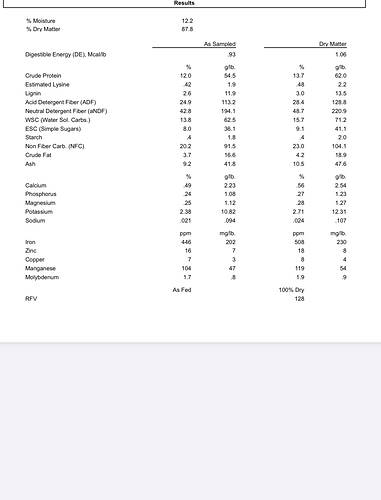Sorry for another hay analysis thread but I’m confused what is more important to consider for sugar levels: WSC or ESC.
Got down to Florida, and the first week I had some hay from up north to continue to mix into the new orchard grass I got down here (which is lovely visually). First week horses are great. Second week when we switched over to full Florida hay, they all seemed extra fresh/spooky especially my jumper. I decided to treat him for ulcers (started Dec 4??) because body worker said could be stifles or ulcers she got reaction for. And since he was spooky (which is also a constant state of being for him. He was born on my farm and always a bit spooky) vet and I agreed to treat. I sent hay to be tested to see if it was very sugary and could be causing them to go a little wild. I just got the results. Friday I went and got different hay (Timothy) to start weaning them off the orchard. They seemed much quieter the next day.
Does this analysis appear sugary to you? Or does anything else jump out? 12% protein doesn’t strike me as high but I haven’t tested much hay. I have an IR horse that I’m switching to Teff. And one that has cushings.
Thank you



